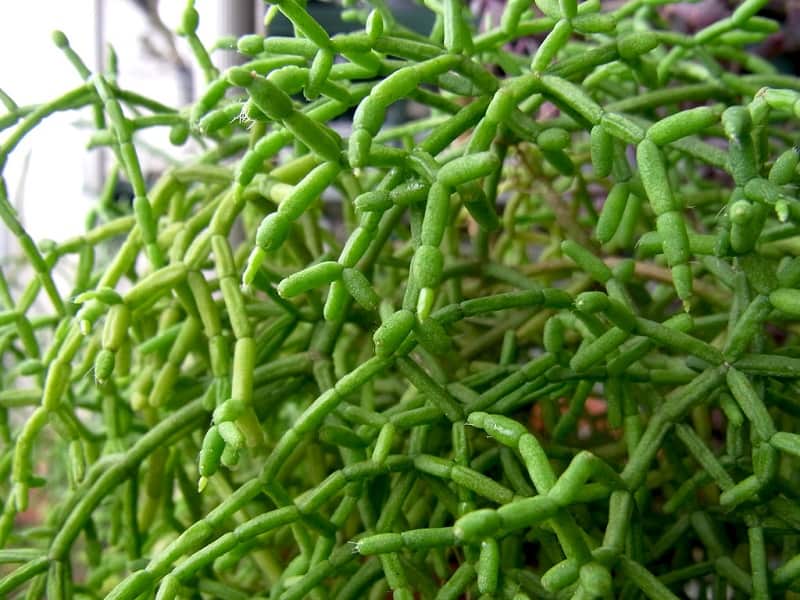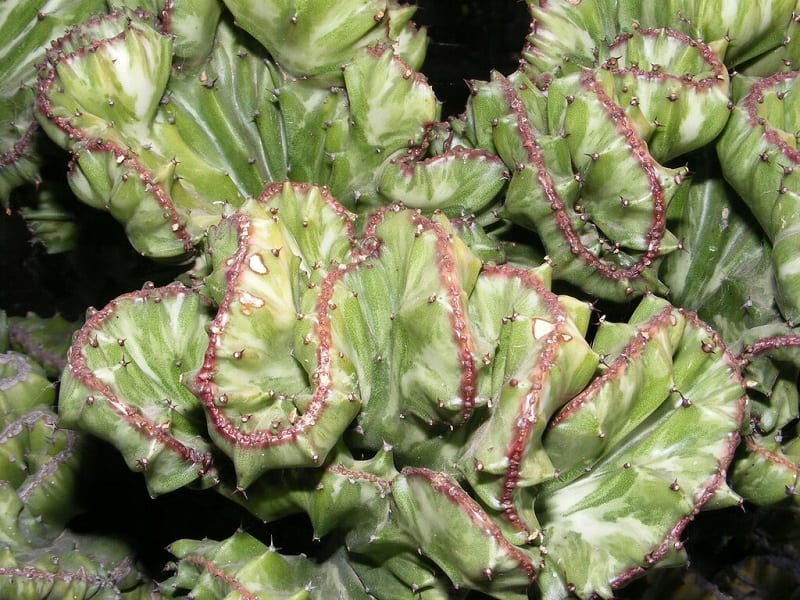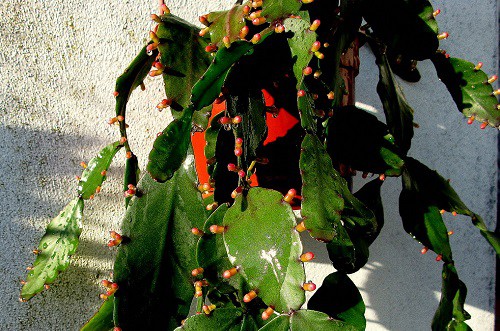You’ll Never Guess If This Trendy Coral Cactus is Poisonous
The coral cactus has taken the houseplant world by storm with its delicate, trailing stems and ease of care. With its vining growth and lack of spines, it’s the perfect low-maintenance accent for shelves, hanging baskets, and terrariums alike. But behind that innocent appearance, could this trendy plant be hiding a sinister secret? Let’s dive in and uncover the truth about whether the beloved coral cactus is friend or foe.

Contents
About the Coral Cactus
Also known as the rice cactus, the coral cactus (Rhipsalis cereuscula) is a unique species native to the rainforests of South America. In its natural habitat, it grows epiphytically, clinging to trees and vines with its hanging stems that can trail up to 16 inches long. Its thin, branching shoots create a densely bushy appearance without a single spine in sight.
This lack of spines is a key advantage – while most cacti species are covered in sharp needles, the coral cactus is completely spine-free, posing no risk of injury to humans or pets. Its resemblance is closer to a succulent than a typical cactus.
You’ll Never Believe the (Non-Toxic) Truth
Despite persistent rumors, the coral cactus itself is NOT poisonous and contains no toxic compounds that would put children or animals at risk. Its stems only excrete water when damaged, unlike some toxic cousins that ooze caustic milky sap.
However, the coral cactus does have some sinister look-alikes in the plant world that have earned it an unfair reputation. Several species like the Christmas cactus and certain spurges are mislabeled as “coral cacti” at garden centers, misleading owners about their potential toxicity.
While the real coral cactus is harmless, these imposters can cause skin irritation, stomach upset, and other minor poisoning symptoms if ingested or touched. Needless to say, you’ll want to steer clear of any “coral cactus” that starts oozing white sap when cut!

The Good(ish) News on Coral Cactus Safety
So what’s the verdict? Can curious kids and pets safely be around this trendy plant? The good news is that the true Rhipsalis cereuscula poses essentially no risk – even if pieces are nibbled, no toxic effects should occur.
That said, it’s still wise to keep the coral cactus out of reach as a precaution, since its trailing vines could tangle little hands or paws. For maximum safety and best display, hang this beauty from the ceiling where it’s visible but inaccessible to unsupervised children or pets.
For bird owners, it’s doubly important to contain the coral cactus, as a loose-hanging planter could seriously injure free-flyers. Bird droppings can also damage and soil the plant over time.
The (Non-Toxic) Cousins
If you’re loving the coral cactus vibe, you’ll be relieved to know that its entire Rhipsalis genus of “mistletoe cacti” and trailing epiphytes is considered non-toxic. Some other harmless trailing relatives to consider include:
- Rhipsalis baccifera (up to 13 feet of rounded stems)
- Rhipsalis burchellii (purple-hued stems up to 20 inches)
- Rhipsalis crispata (pale green, leaf-like stems to 20 inches)
- Rhipsalis clavata (bell-shaped flowers on branching stems)
Just Watch Out for These Toxic Impostors!
As mentioned, the biggest risk with so-called “coral cacti” is the potential mix-up with legitimately poisonous plants. Always double-check your new purchase against these toxic doppelgangers:
- Pencil Cactus/Spurges (Euphorbia tirucalli, Euphorbia lactea ‘Cristata’): These succulent euphorbias are sometimes deceptively labeled as coral cacti despite oozing a nasty, irritating white sap when cut. Avoid ingesting any part.

- Christmas Cactus (Schlumbergera truncata): While only mildly toxic, this popular holiday plant can cause vomiting, diarrhea, and skin rashes if nibbled, especially for pets and kids.


Some non-toxic look-alikes in the same families are safe, like the Easter cactus (Rhipsalidopsis), leaf cacti (Epiphyllum), and true non-toxic Rhipsalis species. But play it safe and verify your plant’s identity before bringing it home.
In the end, the coral cactus itself is an innocent – yet trendy – addition to your indoor garden. As long as you’re confident it’s the real deal and not a poisonous phony, let those stunning vines hang free without fear! Just be sure to keep little ones from getting too hands-on with this beauty.
